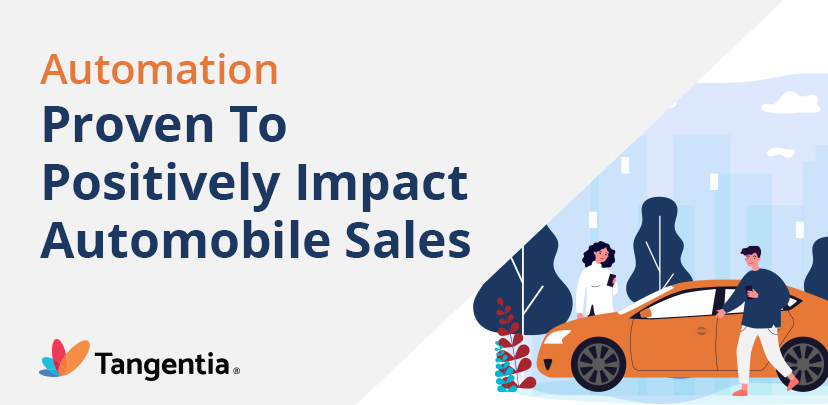|
|
||||||||||||||||||||||||||||||||||||||||||||||||||||||||||||||
|
||||||||||||||||||||||||||||||||||||||||||||||||||||||||||||||
Month: April 2021
Ebook – 83% of Manufacturers Report Rapid ROI from RPA
Case Study : Rollover Pet Food + EDI
Using RPA to Expand B2B Automation Beyond EDI
The Tangentia EDI Gateway is a platform that seamlessly integrates with multiple business systems to enable small- and medium-sized businesses (SMBs) and large enterprises to attain full compliance with the EDI requirements of their trading partners, whether they are on the front end or the back end.
The Tangentia Gateway provides a range of state-of-the-art features, such as EDI connectivity to over 2,000 trading partners globally, full integration with eCommerce platforms and ERP/WMS/Carrier systems, support for multiple EDI standards, and support for multiple configurable user accounts.
However, automation can do so much more. It is vital to any business, large or small, to expand beyond their EDI to get the most out of automation. Tangentia makes this possible by providing an RPA platform to expand your order-to-cash and procure-to-pay systems.
Expanding the Order-to-Cash System
The current order-to-cash system involves the supplier organization sending the buying organization an invoice once they have received the purchase order. In this way, 20% of your EDI customers account for 60% to 80% of your transactions. But what about the other 80% of your customers that account for 20% to 40% of your transactions? These customers are small businesses that lie outside of your EDI and that means you are stuck manually processing their transactions.
This is where robotic process automation (RPA) comes in. RPA has the power to automate transactions with customers outside of your EDI. This includes transactions made via email, fax, PDF, and paper, making it possible for you to automate 100% of the transactions you have with your customers.
The benefits of automating order-to-cash are clear. They include:
- Onboarding smaller customers that do not have EDI capabilities
- Reducing back-office staff by as much as 90%
- Increasing the speed of payments
- Improving cashflow
- Reducing costs and increasing performance by as much as 83%
- Improving customer service
Expanding the Procure-to-Pay System
The procure-to-pay system from the side of the buying organization operates in a similar fashion. In this situation, it is still 20% of the EDI vendors accounting for 60% to 80% of the transactions, with smaller businesses operating manually via email, fax, PDF, and paper. Even vendors such as communications suppliers and cleaning companies send invoices manually.
Again, RPA can automate the procure-to-pay process, onboarding those vendors that do not operate via an EDI. Manual transactions can be processed through the RPA platform in a similar manner to order-to-cash transactions. The benefits of this include:
- Reducing invoicing costs of up to 80%
- Reducing invoice processing time from days to minutes
- Increasing data capture for improved decision making
- Improving procure-to-pay efficiency and vendor relationships
Which Bot Type is Right For Your Business?
RPA relies on software bots that are capable of accessing and pulling data from databases, forms, purchase orders, invoices, and other sources of data and information. For example, a bot can read through an invoice, access the required information, fill out forms when required, and will learn the first time it goes through this process. The next time the bot encounters a similar invoice, it will know precisely what to do.
Tangentia Intelligent Automation (TiA) is Tangentia’s bot platform. TiA bots are capable of performing tedious, repetitive tasks and processes that are not the best use of human time, and they do it faster and without human error. An example is the TiA bot that deals with purchase orders and invoices. This bot will:
- Open the purchase order attachment in the email
- Scan the purchase order
- Pull the required information from the purchase order
- Input the information into the proper fields of an Excel file
- Create and fill in all the details of the sales order
- Create and automatically send the invoice to the customer
One purchase order could take as long as 10 minutes to process when it is done manually. However, the bot can process four purchase orders in less than 30 seconds. This is a win, especially for time-sensitive purchase orders. It can take less than four hours from the receipt of a purchase order to dispatch.
Expand Your EDI Capability with RPA
The turmoil of today’s global environment, which is largely driven by the COVID-19 pandemic, has increased the need for automation. However, EDI is limited to partners who also have an EDI system. RPA can expand your automation capabilities to include partners who do not have EDI capabilities. In fact, close to 50% of businesses worldwide will increase RPA adoption simply due to COVID-19, with the following goals:
- Open the purchase order attachment in the email
- Increasing agility, resilience, and diversity in supply chain operations
- Dealing with increased cost pressures through the automation of back-office processes and operational tasks
- Supporting remote workforces
It’s time to start thinking about expanding your automation. If you are interested in learning more about what RPA can do for your order-to-cash and procure-to-pay systems, reach out and speak with a Tangentia team member today. We’re looking forward to hearing from you!
Expand Your B2B Automation Beyond EDI Using RPA. Watch our 45 min On-Demand webinar where you will learn how RPA & EDI can extend your automation capabilities.
Expand Your B2B Automation Beyond EDI Using RPA
Watch our 45 min On Demand webinar where you will learn how RPA & EDI can extend your automation capabilities
Unattended Versus Attended Bots — Which Ones are Right For Your Business?
More and more processes are becoming automated for businesses of all sizes. Affordable automated processes are now feasible for companies, regardless of industry or company mandate.
With the rise of business automation and lowered cost requirements of automating common business tasks, robotic process automation or RPA provides needed services that can overcome common business challenges and eliminate manual processes that are error-prone and time-intensive.
This article will cover everything bots, specifically RPA and unattended and attended bots, and how they can help your business.
What is RPA (Robotic Process Automation)?
RPA refers to software that automates common business tasks. You can purchase RPA with designated tasks to complete, or you can automate processes specific to your workflow and industry.
Tax software is a form of RPA. You can automate the sending of receipts, promissory notes, invoices, and more to clients and customers, while automatically filling in tax forms for your company accountant with the click of a button.
RPA processes can fulfill low-level tasks that employees can perform. If money is tight, or you want your employees to focus on specialized tasks and skillsets, you can use RPA to take over these simplistic tasks.
Unattended Bots Vs. Attended Bots: What’s the Difference?
Bots solve tasks, it’s that simple. Whether you use unattended or attended bots, automate the software and let it do the work. Bots can perform tasks for your business with or without constant guidance from an employee or multiple employees, depending on whether you choose to use unattended or attended bots.
You can also choose both if you want to mix and match how involved your employees are when automating tasks like sending order confirmation emails to clients or updating invoices based on electronic purchase orders.
Unattended bots require no human interaction. These bots are designed to tackle repetitive and frequent tasks at scale. For example, unattended bots are ideal for manual data entry, repetitive admin tasks, monitoring data streams, and other similar tasks.
Attended bots require human interaction. These bots handle simple tasks that make up larger, more complex processes. They often work in tandem with humans to automate complex workflows. Attended bots are not designed for scale. Instead, you should think of them as individualized personal assistants. For example, a customer service rep interacting with a client may use an attended bot to pull customer data during the call.
Which Bot Type is Right For Your Business?
If you want to retain a bit more control over your business bots, choose attended bots. If you have experience with bots and want to automate these processes even more than your normal amount, choose unattended bots.
You can choose both; you do not need to limit yourself to choosing one or the other.
Businesses without experience with bots should choose attended bots to start before moving onto unattended bots. You can use attended bots for some processes and unattended bots for other processes.
Companies experienced with technology, especially RPA or bots, can skip attended bots and go right to implementing unattended bots.
Adopting RPA in Your Business
RPA adoption can be a significant part of the project management process. As you are planning projects and processes, consider which tasks can be automated to save time and increase project efficiency. Fulfilling projects under budget and ahead of schedule is a much more realistic process when bots and RPA can automate many lower-level tasks that require minimal knowledge and skillsets.
Repetitive, low-level tasks are prone to human error. Such tasks take valuable time and money away from more important tasks. These tasks no longer need to be done by human employees but can be performed by automation software in fractions of a second.
Adopting RPA can save you time, money, and efficiency, as well as raise employee morale.
If you are hesitant to add bots, consider the fact that you already have. If you use GPS for delivery runs, you are automating route mapping from a manual process to an electronic version. If you use Microsoft Word, you are automating the creation of a business document instead of writing it out by hand.
Specific bot software and automation are no different than a manual process an employee uses to finish a task faster and under budget.
Key Differences Between Unattended and Attended Bots
While both types of bots can help your business, key differences exist between unattended and attended bots.
Consider attended bots like an extension of your employees. Employees can make decisions and choose actions for these bots to perform. Bots need to be assigned tasks to complete. They cannot undertake actions independently.
Unattended bots are like employees themselves. You direct these bots to fulfill tasks and provide them the autonomy to perform actions within a predetermined framework. Unattended bots can therefore seem to act independently, even though they are not. Such bots can finish employee tasks much quicker than manual processes and require minimal interaction from human operators.
Although these key differences between unattended and attended bots are clear, different definitions may exist depending on the industry jargon you use and the specific software you purchase. However, in simplistic terms, unattended bots are “unattended,” and attended bots are “attended.”
Ready to Transform Your Business With RPA? Tangentia Can Help
Tangentia has almost two decades of experience providing automated solutions, like unattended and attended RPA, for customers worldwide.
Whether you need business solutions like AI, EDI, RPA, or B2B integrations, we can help. Book a discovery call today to see what RPA can do for your business.
Choosing Between Attended and Unattended Bots For Your Business. Learn more about attended and unattended bots in regards to which your business should leverage in our eBook.
Choosing Between Attended and Unattended Bots For Your Business
Learn more about attended and unattended bots in regards to which your business should leverage in our eBook.
Learn More





.png)


















